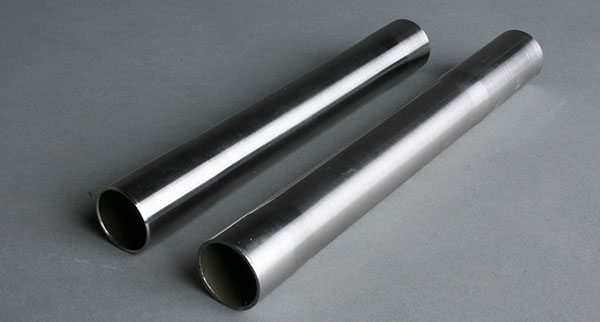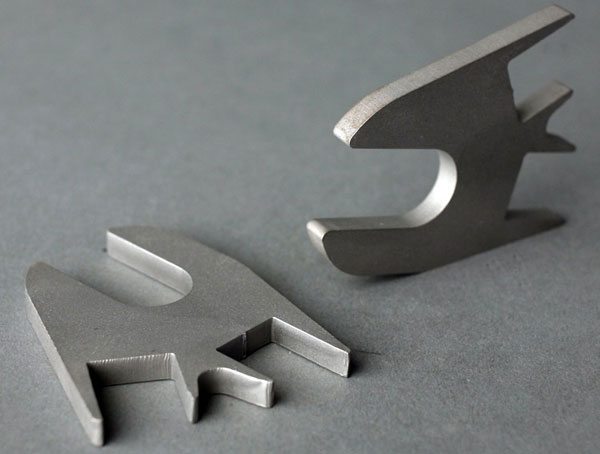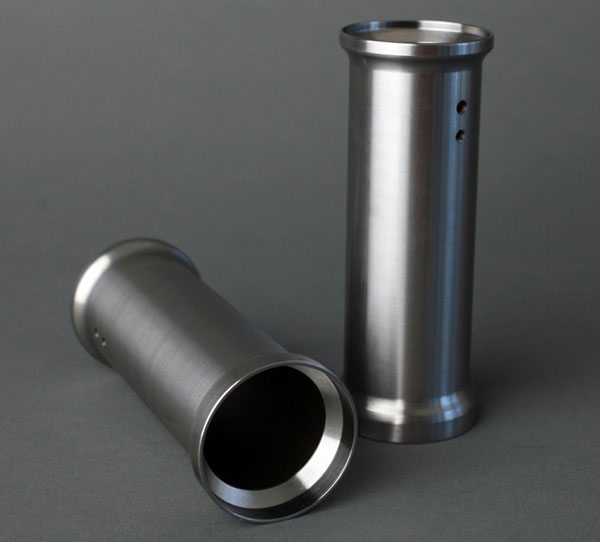Are you curious what 4130 chromoly is and how heat treating works? You’re in the right place. Let’s talk about it…

All photos from Solid Bikes BMX Frame Materials Store
Last night, for one reason or another, a few questions popped into my head that made me think that there are probably a lot of riders out there that just got into BMX might be curious about. What is 4130 chromoly, what is heat-treating and why does BMX use both on so many products? It’s one of those things that a lot of riders know about, but do they actually fully understand what these two things mean and why we utilize them in the industry. So, if you’re curious… Let’s talk a little bit about this!
To start this off, we’re not experts by any means and a lot of this information is from research we found online. Please let us know if there are any errors or information we missed in the comments!

4130 Chromoly Dropouts
4130 Chromoly
4130 Chromoly is one of those things that most BMXers are familiar with because well, a good portion of your bike from your frame to fork, bars and cranks are made from this material. But what exactly does “4130” mean? It’s actually has a scientific meaning and the number was assigned by the American Iron & Steel Institute for a specific reason. 4130 chromoly is an alloy steel that is made up of two parts – hence the word “Alloy” which means a metal made by combining two or more metallic elements, especially to give greater strength or resistance to corrosion. Those two parts are chromium and molybdenum.
Chromium is defined as the chemical element of atomic number 24, a hard white metal used in stainless steel and other alloys.
Molybdenum is defined as the chemical element of atomic number 42, a brittle silver-gray metal of the transition series, used in some alloy steels.
The number 41 indicates a low alloy steel that contains these two materials. The 30 indicates that the material has a carbon content of 0.3%. So in long form, 4130 means an alloy steel with chromium and molybdenum that has a carbon content of 0.3%.
One thing to mention about the word “alloy” is that it’s more of broad term explaining the metal material is made of two parts. For example, you might find aluminum alloy for some parts of your bike.

Integrated 4130 Chromoly head tube
So, why do we use 4130 chromoly versus other forms? Chromoly is much stronger than traditional 1020 steel and it has a higher strength to weight ration and high tensile strength, which means we can use less material and achieve a product that can withstand the abuse that BMX brings without breaking (easily). There are a lot of factors involved when it comes to product design and some of the most important factors are weight, strength and cost. 4130 is a material that offers high strength without an excessive weight or price tag. 4130 is also a material that is easily formable and weldable. For a project like a set of bars which requires bending of the tubing and welding, it is easy to work with and doesn’t lose too much of its strength when done properly. Obviously bending and welding will impact the overall strength, which is why you will see breaks on bends and welds versus the middle of tubing.
Occasionally we will see 4140 chromoly used in applications. For example, The Daily Grind use 4140 chromoly on their hub guards. Essentially, 4140 chromoly is harder / stronger than 4130 due to the increased carbon. However, it also comes with a slightly higher price tag and that additional hardness and strength is not necessary for most applications in BMX.
Heat-Treating
Heat-Treating is a term that goes hand in hand with 4130 chromoly very frequently in BMX. What is heat-treating exactly? It is a process where extreme heating and / or cooling is applied to the chromoly to alter its properties that can change hardness, strength, toughness, ductility and elasticity in the material. For example, when a set of bars are heat-treated, the tubing is cut, bent and then welded. Once these three steps are applied to the material, it can cause the chromoly to weaken from the stresses put on it. Heat-treating is applied and the properties in the alloy are changed which can align different parts creating a stronger bond which then makes the material stronger throughout and able to withstand higher tolerances from impacts and stress put on it from riding. There are multiple names and forms of heat-treating in BMX like Odyssey’s 41-Thermal, Mutiny’s 420 Baked, S&M’s 4Q Baked, Subrosa’s Deathproof and Wethepeople’s Full-Liquid process. All use heat to manipulate the material to increase its overall strength. Wethepeople’s Full-Liquid process is slightly different because they actually drop the material into essentially a hot bath to ensure the tubing is heated from all over, where as other heat-treating processes are cooked like an oven that heat from the outside in.

4130 Chromoly MID bottom bracket
Heat-treating is a process that also increases the overall price of the product because it’s an additional step in the manufacturing process. You will typically find forks, bars and smaller pieces being completely heat-treated with only a few frames being heat-treated completely. It’s more common to find pieces like the head tube, bottom bracket and drop outs to receive heat-treating prior to being welded to the rest of the frame.
One thing to consider as a downside to heat-treating is that the metal is more likely to snap than bend. So, for a set of bars for example, when you take a heavy landing, your bars would be more likely to break off than bend down due to heat-treating. Not to say it’s going to make the bars more likely to break, but it’s just more likely after the process has been done. When comparing the two, you would be far more likely to bend a set of non heat-treated bars than to snap a pair of heat-treated bars.
Heat-Treating is a very interesting and in-depth topic that we’re briefly touching on. If you are curious and would like to learn more, check out the Wikipedia page on heat-treating for a very in-depth explanation of how the process works and interacts with different materials.
So, with that being said, we hope you learned a little bit about just what 4130 chromoly is and what heat-treating is. We’re not experts by any means on this subject and we definitely just touched the tip of the ice berg on what could be discussed, so we want to get some discussion going in the comments. If you have a question or have some more points we missed, just drop us a line below!
Want to learn what BMX tubing terminology like “butting” “tapered” “extrusion” and “swaging” means? Check out BMX Tubing Terminology

